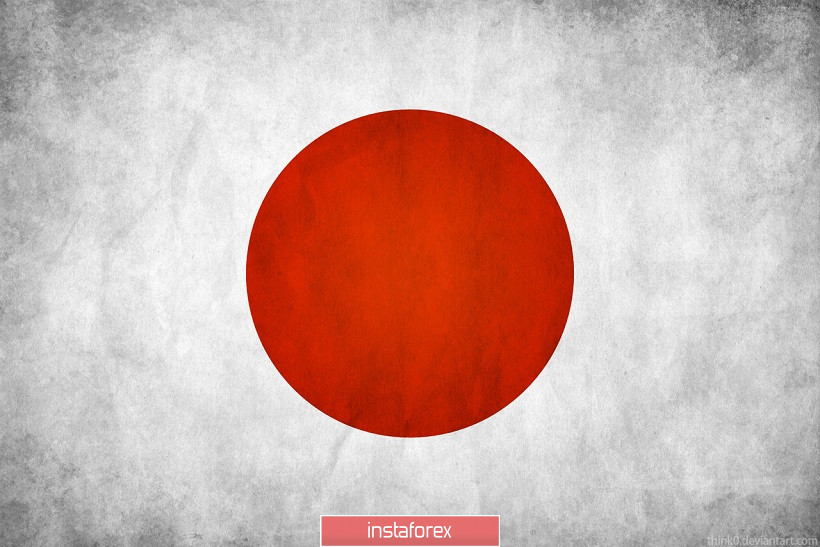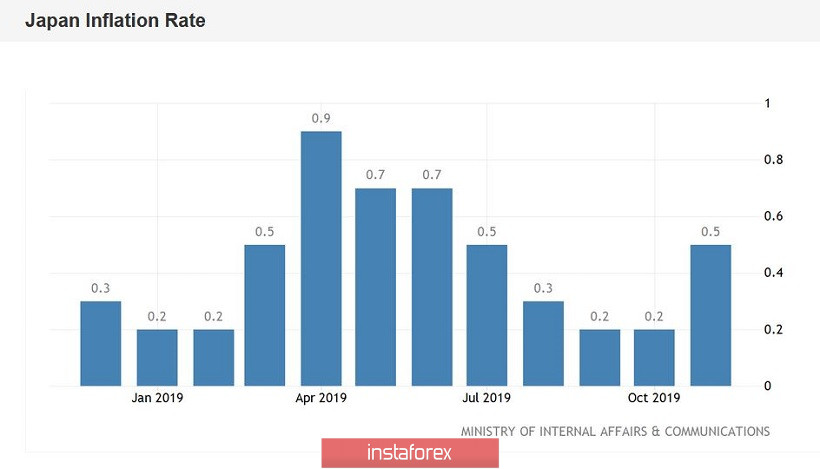The dollar/yen pair reached semi-annual highs, gaining a foothold in the 110th figure. The upward trend for the pair has been actively developing since the beginning of 2020 - the price has stepped over three hundred points for a week and a half. Against the backdrop of geopolitical agreement, the yen is not in demand, while the currency has no arguments for its growth. At the same time, protective assets (with the exception of the franc) show a downward trend in response to recent developments related to US-China relations, Brexit and Iran. The Japanese currency is no exception.

The latest surge in interest in the Japanese currency was January 7-8, when the world was on the verge of a "big war." The killing of the Iranian general by the Americans excited the markets: the USD/JPY pair instantly collapsed by almost 100 points, gold reached three-year highs, and the cost of a barrel of Brent oil soared to $ 70. However, the panicked mood quickly became unsuccessful. It became clear within a few days that Iran would not go to a large-scale confrontation: the Iranian authorities announced that "retaliation has come" having fired at the American air base in Iraq. Washington, in turn, did not respond to this shelling, transferring the "dialogue" to the economic plane: the States increased sanctions pressure on Tehran.
The reaction of the yen was not happening quickly. After reaching many-month lows (107.66), the USD/JPY pair turned around and began to actively gain momentum, with virtually no price pullbacks. After all, there was a pause in the trade war between the United States and China after the resolution of the US-Iran conflict. And although the parties could not resolve the most difficult issues within the first stage of the negotiations, the yen lives on today - and today, the trade war has been suspended, despite the additional tariffs introduced by the States last year. The situation with Brexit is similar: the probability of Britain's nominal exit from the EU on January 31 is 100%, and this fact also provides indirect support to the USd/JPY pair. At the same time, the yen ignores the risks associated with the prospects for further negotiations in the transition period.
Thus, the main conflict situations that worried the traders of the currency exchange market was not achieved one way or another. Well, at least for today. Therefore, it is not surprising that the Japanese currency, as a defensive asset, has ceased to be in strong demand from investors. Moreover, the USD/JPY pair began to focus on other fundamental factors - primarily related to the prospects of monetary policy and macroeconomic reports. Here, the yen leads a deliberately losing game - the Japanese regulator does not get tired of repeating that it is ready to further mitigate monetary policy if the achievement of the target inflation level is in jeopardy. In this regard, the Federal Reserve looks more predictable: the Fed members put the issue of lowering rates on an "indefinite pause" at the end of last year, and it seems that this pause will be in effect (at least) until the end of 2020.
The first meeting of the Japanese Central Bank will take place this year which is particularly next Tuesday, January 21. According to the vast majority of experts, the regulator will maintain monetary policy in its original form. It is worth noting here that inflation in Japan shows an extremely weak, but still growth: according to recent data, the consumer price index rose to 0.5% (in annual terms), whereas in the previous month this indicator could only increase to 0. 2%. On a monthly basis, inflation grew by a modest 0.2%. The consumer price index excluding the cost of fresh food (the main indicator for the Japanese regulator) increased by 0.4% year on year after increasing to 0.2%. In general, this dynamics did not come as a surprise to most experts - all indicators came out at the forecast level.

According to rumors, the Bank of Japan will revise its economic forecast for the fiscal year (which begins in April) at its January meeting. This need arose due to an increase in the package of incentive measures on the part of the government (their total amount is $ 122 billion). According to preliminary data, the budget package will increase the country's GDP by 1.4% over the next fiscal year (period 2020-2021). According to other sources, the regulator is unlikely to make significant changes to the current forecast, as some members of the Bank of Japan are skeptical of the effectiveness (at least in the medium term) of incentive measures.
Thus, traders of the USD/JPY pair will most likely ignore the fact of revising the economic forecast for the next fiscal year. The rhetoric of Haruhiko Kuroda may also have a weak effect on the dynamics of the pair. In one of his interviews, he recently said that he saw a number of signs of weakening Japanese exports, production and corporate business sentiment. On the other hand, he noted the general growth of the Japanese economy. Most likely, he will voice a similar position at the January meeting. This is the usual rhetoric of Kuroda, which has been heard more than once. Therefore, the market most likely does not focus on it.
Summarizing the above, it is worth noting that the dollar / yen pair retains the potential for its further growth. In addition, the yen will remain face to face with an external fundamental background, if Kuroda does not announce any steps regarding a change in monetary policy (which is extremely unlikely). In the absence of "global force majeure" (geopolitical conflicts), the Japanese currency will continue to follow the dollar. The closest target of the upward movement is the level of 111.20 (at this price point, the boundaries of the Kumo cloud closed on the monthly chart).





















